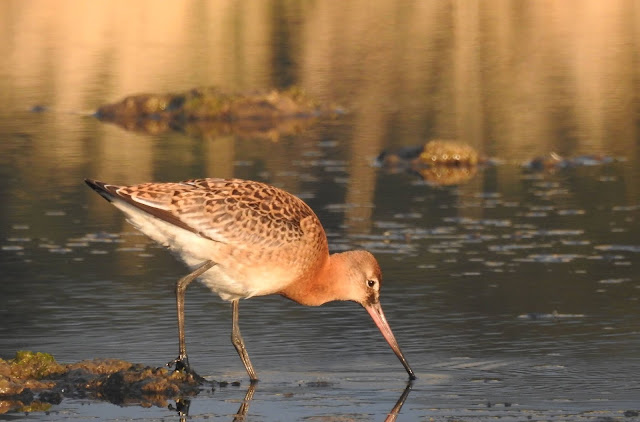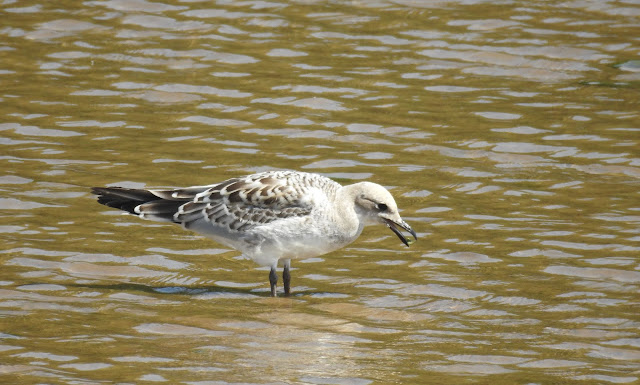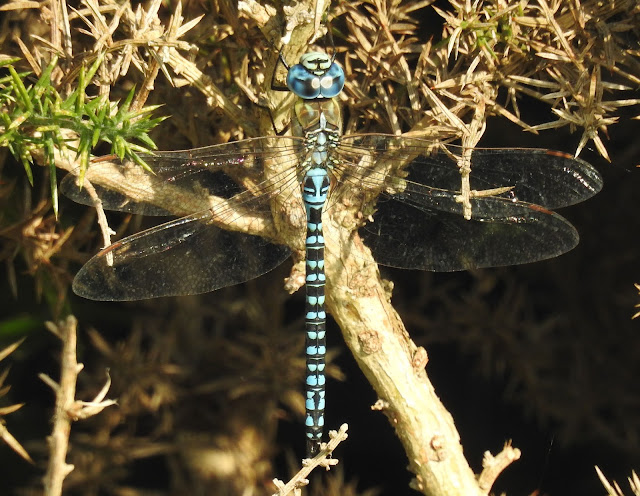So I closed my last post with the sentence "Two blog posts to go until I am bang up to date I reckon, but sorry all you feather-lovers it's going to be insects next... ".
Well that was actually a lie because before I have had chance to complete my insect-themed catch-up post, I have some present time bird news to fill you in about! There's no point getting this blog up to date then ignoring the real time bird news.
Black Hole Marsh continues to be delivering, and I was really pleased to see my first Little Stint of the autumn yesterday morning. Ian Mc found it the previous day, a cracking juvenile and my first here since autumn 2019...
 |
| Little Stint - looking nice and rare! |
 |
| More distant but in better light |
The day before I saw the two juvenile Ruff that have been around recently (three reported one evening) with other birds present including a lone Wood Sandpiper still, up to three Greenshank, 40+ Dunlin, heaps of Black-tailed Godwits, an adult Med Gull and up to 40 Teal (big increase in recent days). Been pleasing to see some young Water Rail about recently too, proving local breeding once again. The biggest surprise for me whilst I was sat in the Island Hide yesterday however was a Red Kite!
 |
| Not what I was expecting |
Seeing all the gulls on the Estuary lift off, followed by all the birds resting in the Tower Hide corner of Black Hole Marsh, I had almost convinced myself an Osprey was about to cruise into view, so when I saw the distinctly graceful wing-beats of a Kite I was a bit surprised. I even momentarily considered Black due to the size of the flush (Red Kites will often only trigger some half-hearted alarm calling from local Herring Gulls) but a quick count up of primary tips, as well as the tail fork and plumage rapidly put pay to that, sadly. Still, being only my second Red Kite of the year, and a species not often seen in late summer/autumn it was still very much welcome! It circled up just south of Black Hole, partially into the clouds, and then powered north west losing height as it glided.
Following on from the out of character Wood Sand that spent a couple of days on the Estuary in July, there was a Green Sandpiper in front of Seaton Marshes hide yesterday on the Estuary. The light was atrocious, but I took a snap because for some unknown reason we see far fewer of these now than we used to. Double-figure counts in July/August ten plus years ago were not unusual at all, but you'd be lucky to get to double-figures over the whole of an autumn now. I don't really know why because virtually every other species of wading bird has gone the opposite way here, thanks to the much improved habitat.
 |
| Green Sandpiper not in usual habitat! |
I am trying to not mention anything about autumn passerine migration, which is building rapidly, as this is the theme for my final catch-up post. But I will sneak in the surprise Merlin that flew over Sheep's Marsh and rapidly east up to Axe Cliff last Thursday. I saw Kestrel, Sparrowhawk and this brown-backed beauty within about five minutes of each other, all no doubt drawn to the Tesco-owned waste ground which is currently heaving with Linnets, Goldfinch, and on that morning 15 Meadow Pipits and two Wheatears.
 |
| Wheatear Seaton Marshes |
Right'o, catch up soon! I'll be posting the previously promised insect blog within the next couple of days :-)


































